Nowhere to Turn
처절함에 대하여
CR Collective, Seoul, KR
2024. 10. 17 ~ 2024. 11. 30
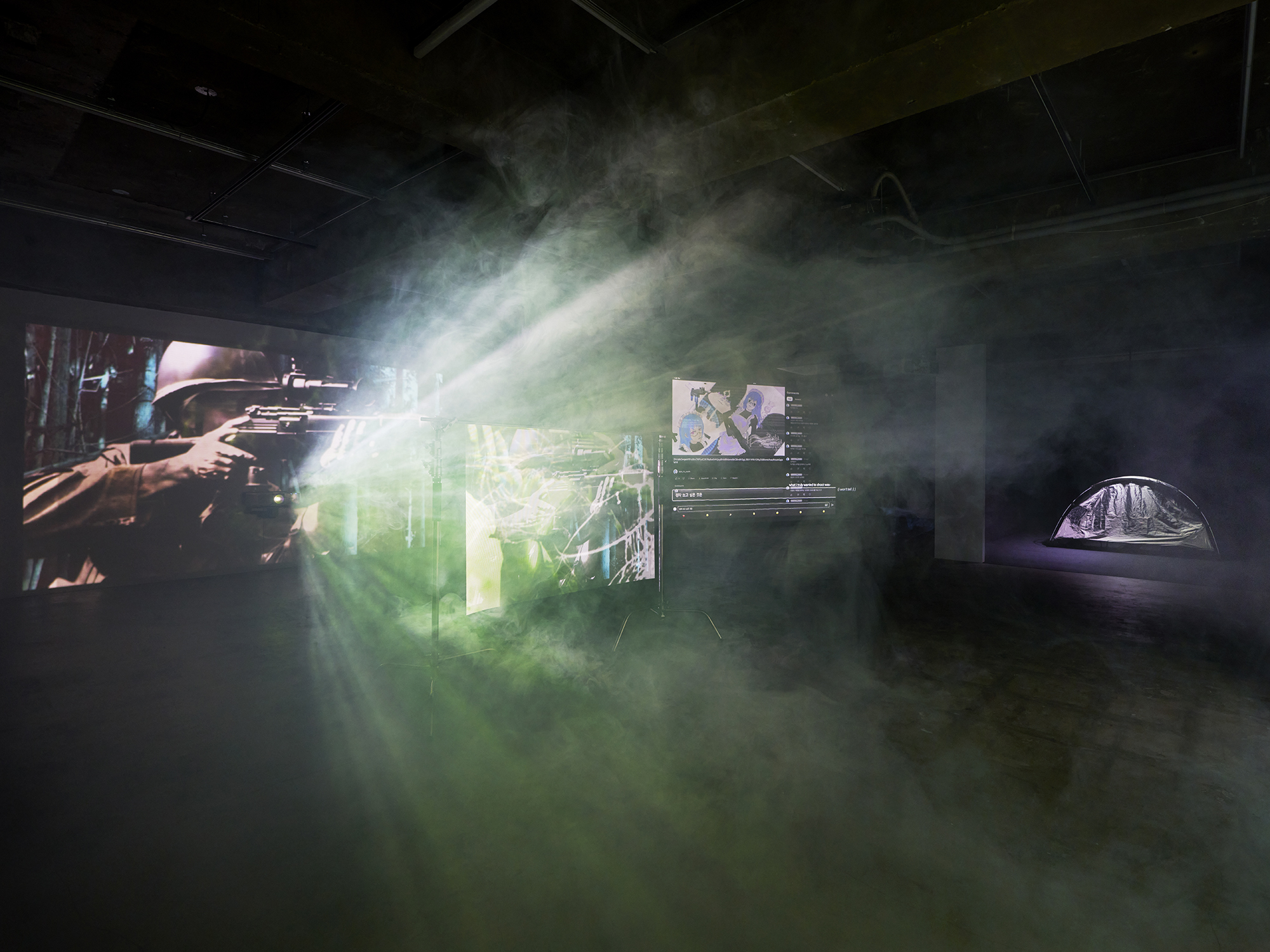
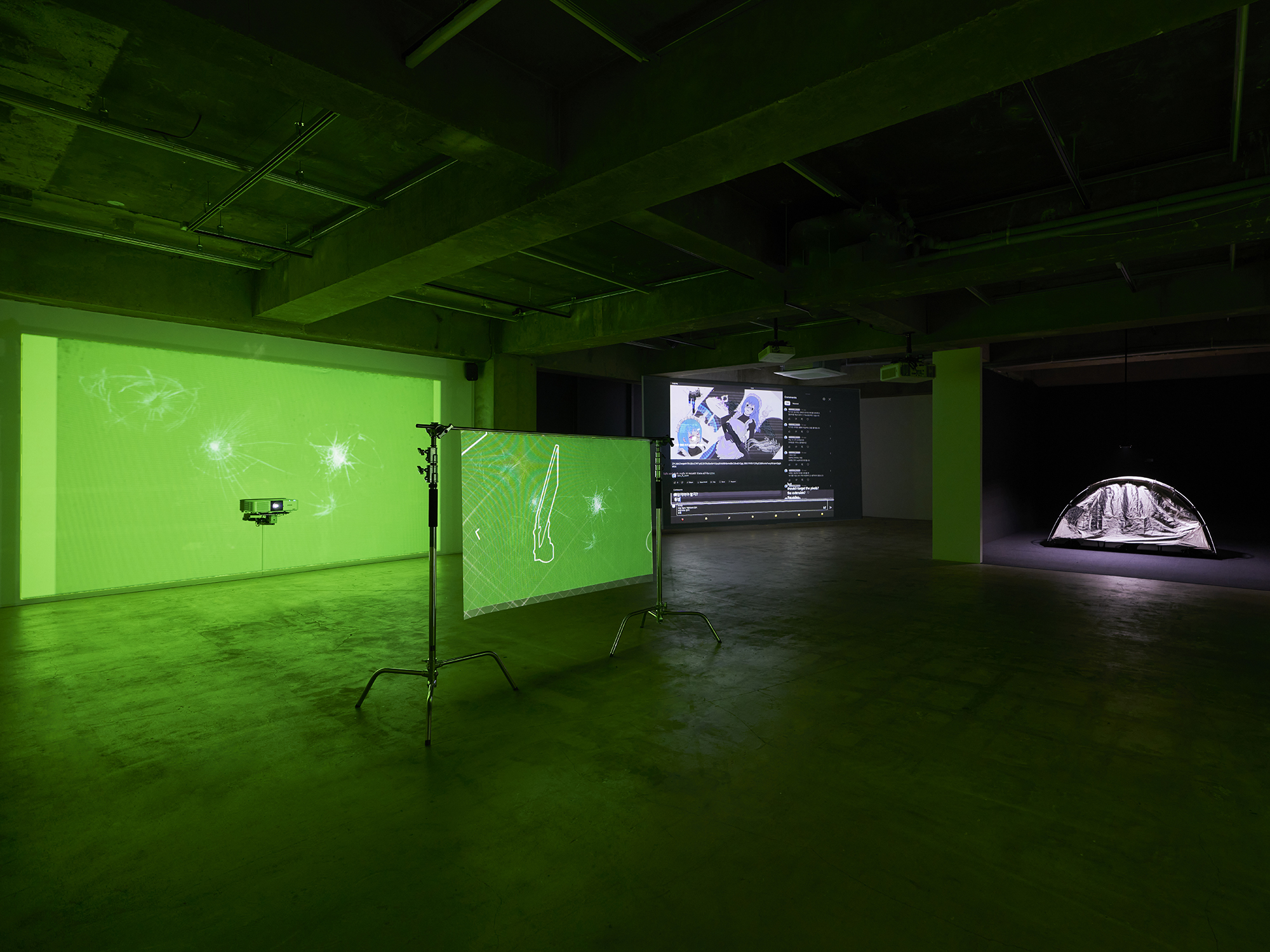

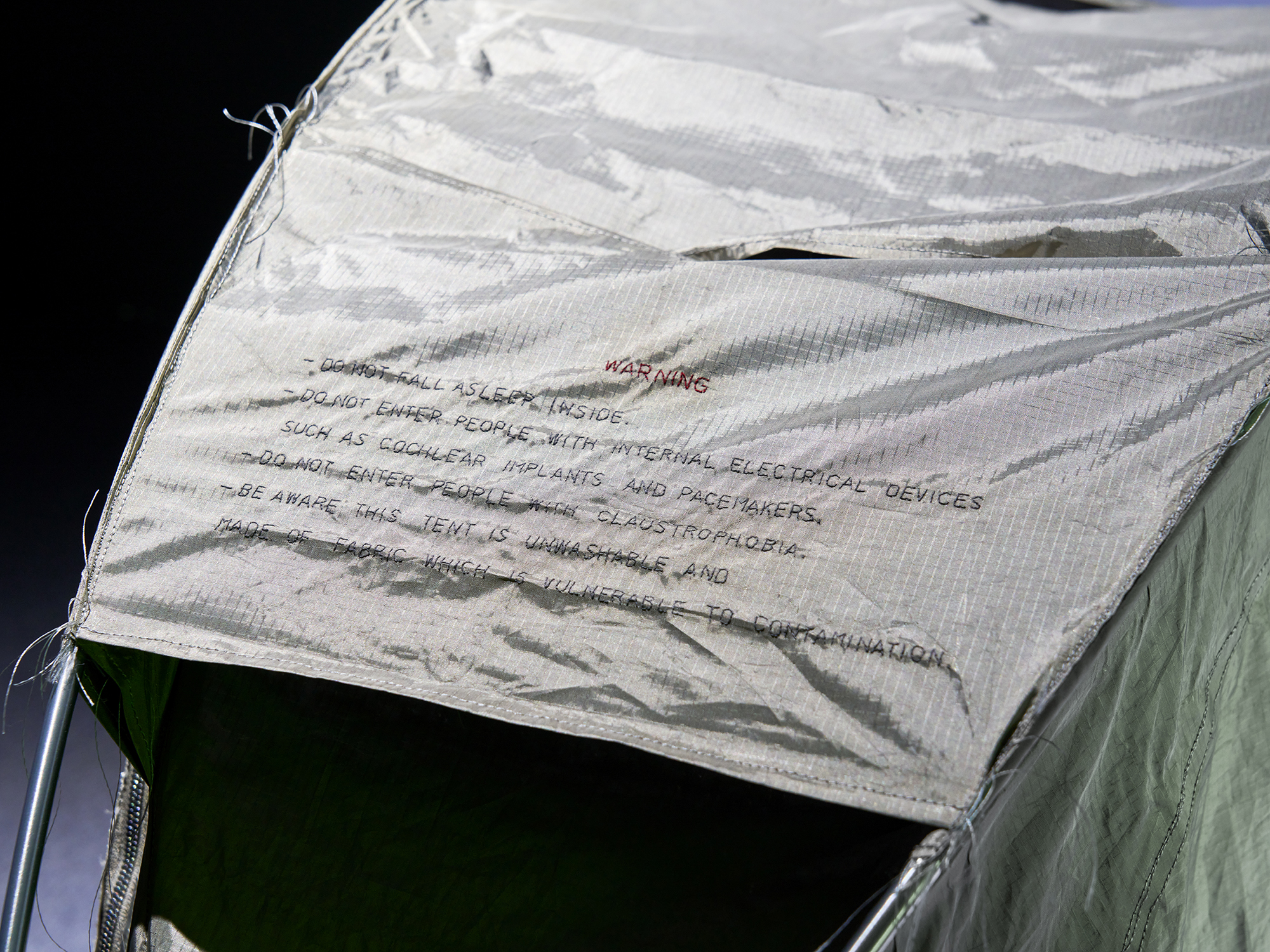

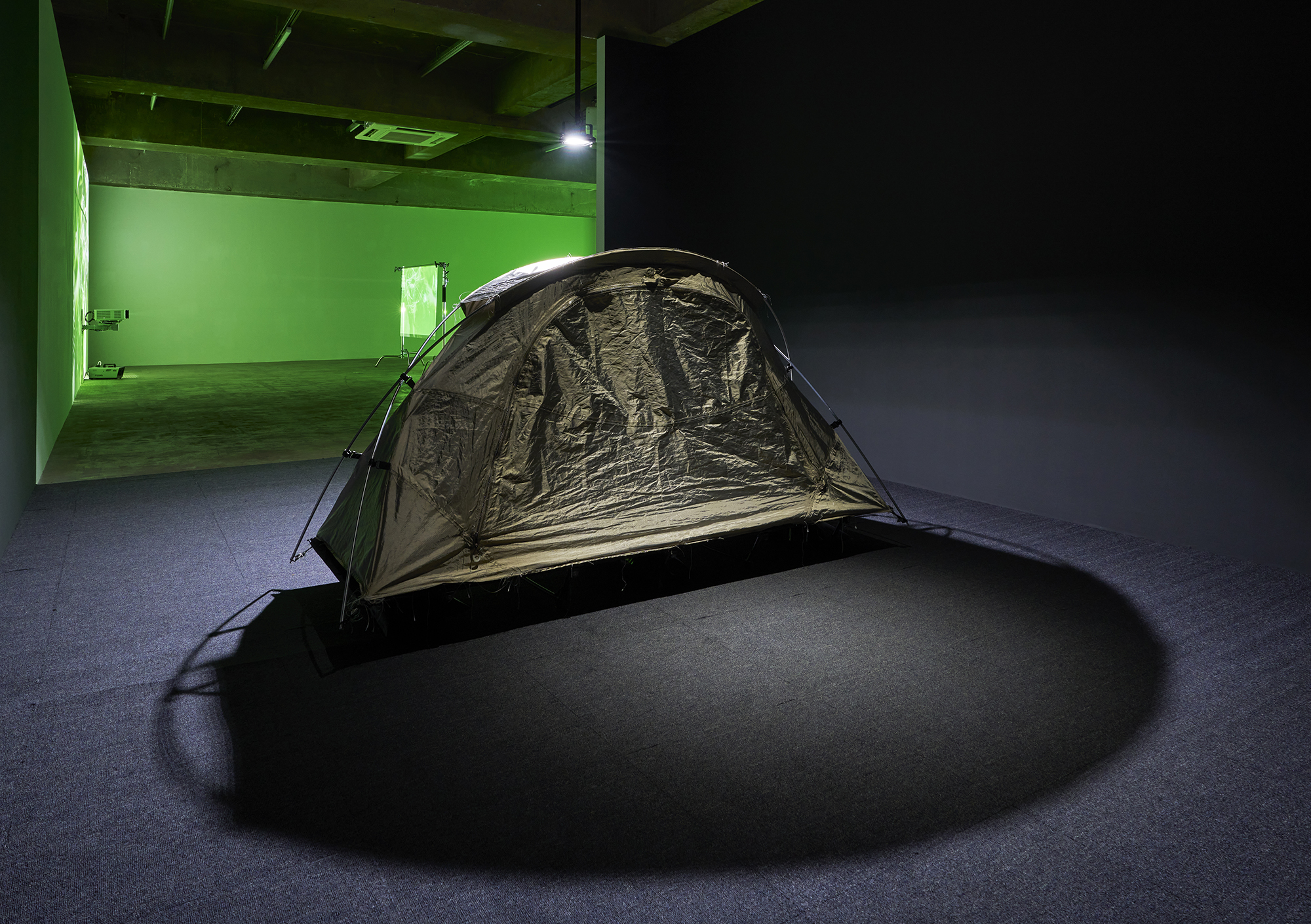
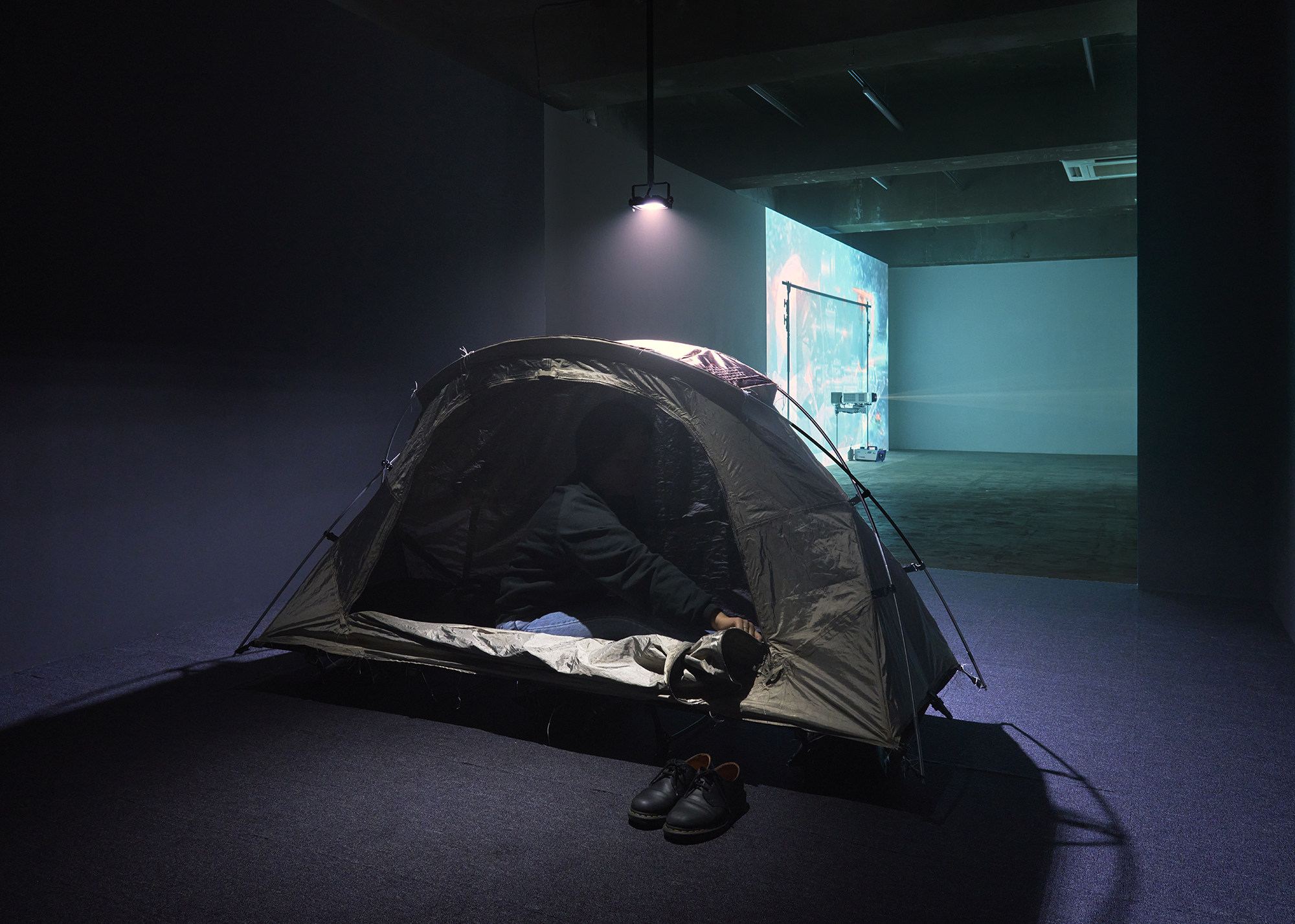
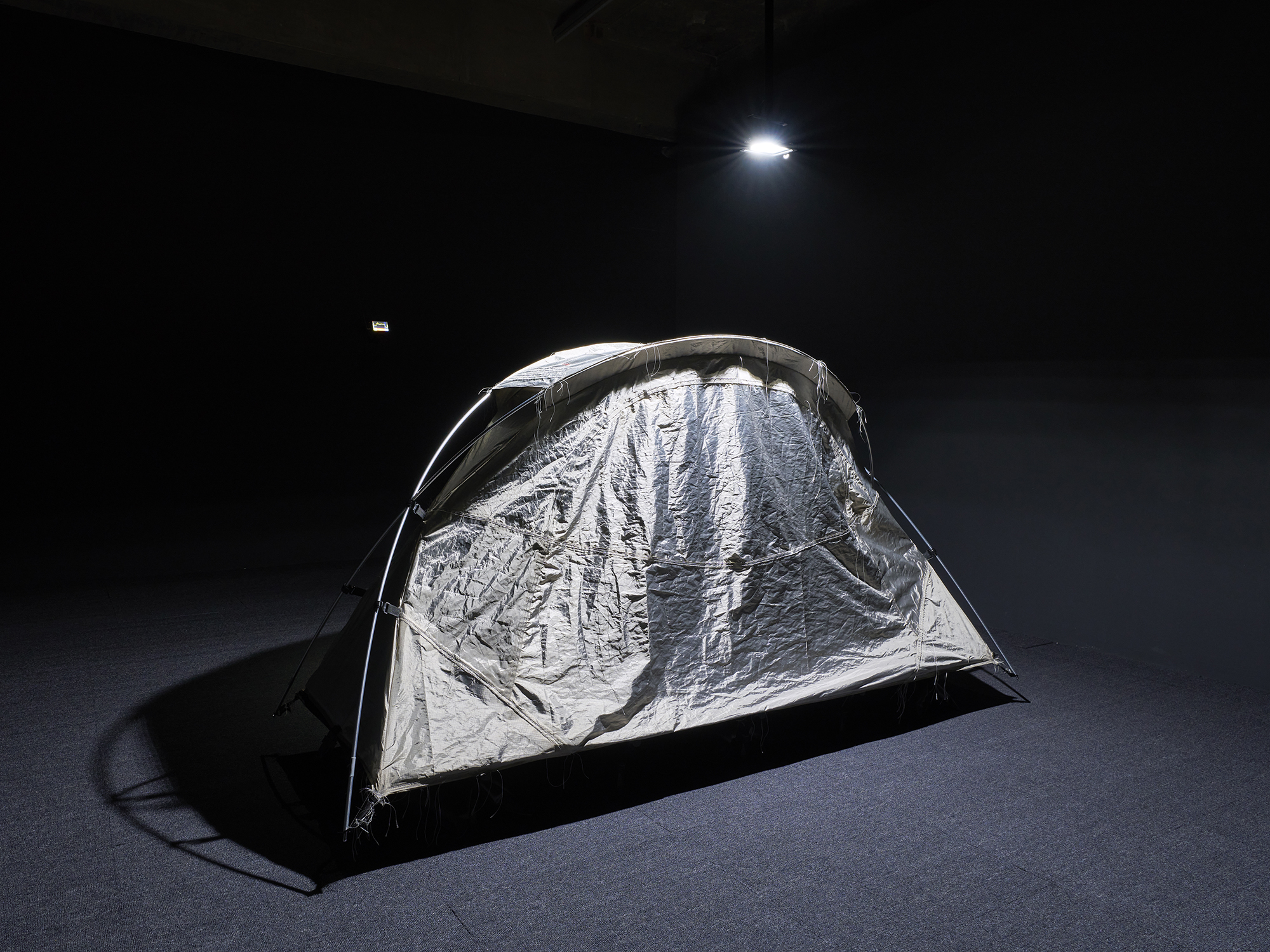
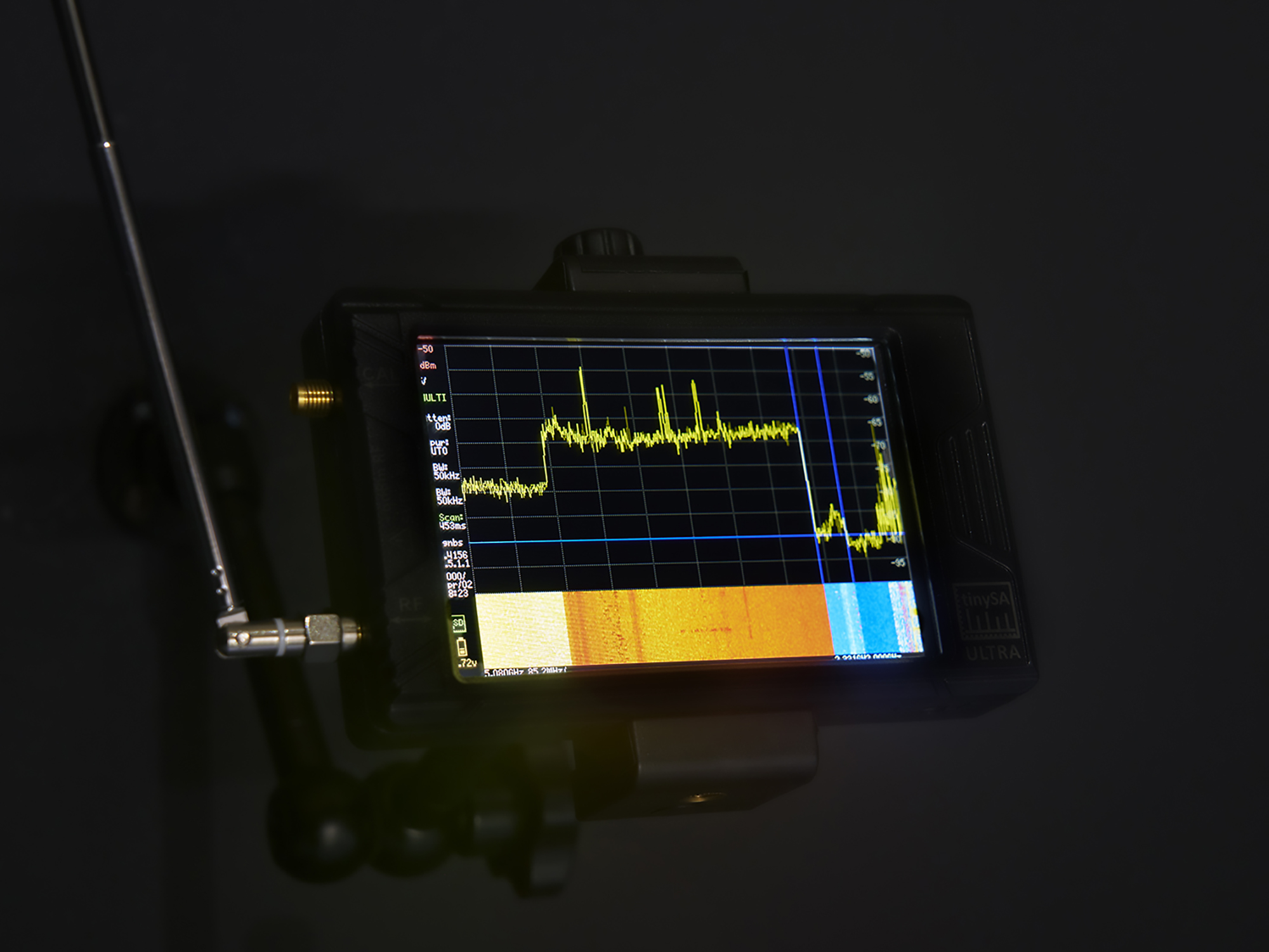
1. For the Finale of Doomed Catastrophe
Catastrophe is the past coming apart. Anastrophe is the future coming together. Seen from within history, divergence is reaching critical proportions. From the matrix, crisis is convergence misinterpreted by mankind.
Sadie Plant + Nick Land1)
We are sensing that the pace of things has reached a critical point. Climate change, resource depletion, extreme wealth disparity, labor issues between machines and humans, and the resurgence of regressive populist politics all serve as evidence.2) “It is easier to imagine the end of the world than the end of capitalism.”3) In a world where a single system dominates everything, it is becoming difficult to conceive of alternatives, especially at a time when both alternatives and revolutions have failed under the previous order. Perhaps we are living in an age where we are despairing over an impending end.4) Floundering in cynicism, futility, and gessepany, unable to move forward or backward, exhausted5) beyond fatigue and left only with burnout—could it be that our contemporary sensibility is tied to anguish?
The drastic changes due to speed impact human perceptual and cognitive systems,6) leading to a renewed examination of the issues of human subjectivity and existence. The endless influx of stimuli, shocks, and spectacles materializes as media, visible everywhere human sight can reach: giant screens installed on every building, and smartphones that never leave our hands. The endlessly repeated/reproduced moving images cast humans adrift in the relentless pace of development, leading to states of nervous tension and mental distraction. Between this schizophrenic human selves, and the humanization of machines, traces of a weakening subjectivity and a fear of technology are scattered throughout.
In this context, the exhibition seeks to explore the evolving systems of human perception/thought, as well as the issues of subjectivity in humans/machines, through the works of three artists who have persistently engaged with the ontological questions surrounding contemporary video media, ultimately aiming to reflect on the very sense of existence.
Drawing inspiration from media philosopher Paul Virilio, Youngho Lee examines the imprints of war machines evident throughout optical media history. She explores the military origins of media that are now playfully consumed. In this exhibition, she examines how the human perception of images has evolved through the mechanical gaze of devices like night-vision goggles and CCTV, which have become clichés in horror movies. In today’s media environment, where hyper-advanced technological images often become detached from reality or desensitize viewers, and where low-resolution images may paradoxically feel more real, she probes the relationship between image use and human perceptual systems. The mechanical gaze, as seen through night-vision devices, also evokes the passive terror experienced by human snipers, whose fear is magnified by automated targeting technology, serving as a metaphor for the weakening of human subjectivity.
Ridane Lee explores the ambiguous nature of existence by navigating the space between reality and virtuality. In this exhibition, she constructs a pin-up dystopia, reconfiguring objectified and commodified (female) images as a counter to the overload and acceleration of modern life. She reflects on this through the existence of girls trapped (or infiltrating) online platforms, camera lenses, and video streaming, which are “extensions/compressions of space” within reality. The experience of scrolling through screens with fingers, the repetitive trembling, and data ruptured by errors immerses us in a state of nervous agitation and mental fragmentation. At the same time, there is an attempt to re-subjectify virtual objects that instantaneously disrupt orders considered as established. In this cybernetic era filled with artificial constructs, the self-expressive comment sections, encoded machine languages, mobile mechanical gazes, and AI-generated images suggest that these entities are evolving into new forms of subjectivity.
Yoonjae Lee’s work, centered on the act of seeing, consistently probes the core principles of visual art through various media including the human eye, cameras, and monitors. In this exhibition, she explores the theme of anguish through the exhausted sense of an individual’s inability to control the world. The exhausted human (l’épuisé), as opposed to the fatigued human (le fatigué), is someone who wears shoes indoors and slippers when going outside.7) Like this figure, she uses a single-person tent, which blocks electromagnetic waves, as a symbol of voluntarily choosing evasion and alienation amid the accelerating bombardment of technology, media, and capitalism. Yet, given that this tent can be likened to an air-raid shelter providing minimal refuge in the midst of war, it suggests that she is acutely aware of the dystopian reality surrounding her.
Lastly, this exhibition is also a meta-exhibition questioning the utility and necessity of art. Aren’t contemporary artworks and exhibitions also caught up in this accelerated flow? What role, if any, can art play in the socially critical flows we’ve been observing? What can we do when no alternatives seem visible? In response, the three curators have sought to unravel various layers through their individual perspectives, rather than preaching a singular utopia in the face of ongoing, desperate existence. After all, when utopia is singular, it often aligns with dystopia. At this critical juncture, where we can move neither forward nor backward, how might artists apply their own unique approaches in their work amidst the rampant suffering that still persists? Perhaps the answer is already quietly revealing itself in the cracks that have begun to emerge.
Jiwon Hwang (co-curator)
1) Plant, S., & Land, N. (2019). Cyberpositive. In R. Mackay & A. Avanessian (Eds.), #Accelerate: The Accelerationist Reader (pp. 300-307). Humanist Publishing Group. (Original work published 1994).
2) Bastani, A. (2020). Fully automated luxury communism (Fully Automated Luxury Communism: A Manifesto) (M. Kim & J. Yoon, Trans.). Hwangsogeoreum. (Original work published 2019). pp. 39-40.
3) Fisher, M. (2018). Capitalist realism (Capitalist Realism: Is There No Alternative?) (J. Park, Trans.). Luciole. (Original work published 2009). p. 11.
4) Enzo Traverso argues that the 21st century is an era without even a utopia. The reason is that in the 20th century, there existed a concrete utopia in the form of socialism, and revolutions occurred to realize it. However, due to a series of historical events, such as the establishment of dictatorial regimes immediately after the Russian Revolution, any utopia that could oppose capitalism in the current social system has disappeared.
Traverso, E. (2024). Melancholy of the left (Left-Wing Melancholia: Marxism, History, and Memory) (J. Kim, M. Seok, & H. Cho, Trans.). Saemulgyul. (Original work published 2016).
5) Deleuze, G. (2013). The Exhausted (L’Épuisé)(J. Lee, Trans.). Moonji Publishing Company. (Original work published 1992). p. 23.
6) Sim, H. (2012). 20segi maechicheolhak(20세기 매체철학). Greenbee. p. 26.
7) Deleuze, G. (2013). The Exhausted (L’Épuisé)(J. Lee, Trans.). Moonji Publishing Company. (Original work published 1992). p. 23-25.
1. 처절한 파국의 종말을 위하여
우리는 속도가 임계점에 도달했음을 감각하고 있다. 기후 변화, 자원 부족, 극단적인 빈부 격차, 기계와 인간 간의 노동 문제, 회귀하는 표퓰리즘 정치가 바로 그 증거2)이다. “자본주의의 종말보다 세계의 종말을 상상하는 편이 쉽다.”3) 하나의 시스템이 모든 것을 장악한 세계관에서 다른 시스템을 쉽게 생각해 볼 수 없는 상황, 이전의 질서에서 대안과 혁명이 모두 실패해버린 시기. 어쩌면 지금은 종말을 낙담하고 있는 시대4)인지도 모른다. 냉소, 허무, 패배감 속에서 허우적대며 이쪽으로도 저쪽으로도 갈 수 없는 상태, 지쳤음을 넘어 소진5)만 남은 모습, 동시대의 감각은 ‘처절함’과 관련되지 않을까?
파국(Catastrophe)은 흩어져 가는 과거다. 전도(Apostrophe)는 함께 도래하고 있는 미래다.
역사의 내부로부터 보면, 발산(divergence)은 임계 범위에 도달하고 있다.
근본적으로 보면, 위기는 인류에 의해 잘못 해석된 어떤 수렴(convergence) 현상이다.1)
– 세이디 플랜트(Sadie plant) + 닉 랜드(Nick Land)
속도로 인해 격변한 세상은 인간의 지각 체계와 사유 체계6) 또한 변화시키고, 이는 인간의 주체와 실존 문제를 새롭게 조망한다. 파멸로 이끄는 촉발로 인해 끊임없이 펼쳐지는 자극, 충격, 스펙터클은 인간의 시야가 닿는 모든 곳 (거리의 모든 건물에 설치된 거대한 스크린, 손 안에서 떨어질 생각 않는 핸드폰 등)에 존재하는 미디어로 발현되고 있으며, 수도 없이 반복/재생되는 영상moving image은 멈출 수 없는 발전의 속도에서 튕겨져 나가는 인간을 신경과민과 정신분산 상태로 장착시킨다. 이러한 분열증적인 인간 주체와 기계의 인간화 사이에서 표출되는 나약해지고 있는 주체성과 기술 공포의 흔적은 여기저기 흩뿌려져 있다.
이와 관련하여 본 전시에서는 동시대에서 영상 매체의 존재론적 문제를 천착해 온 작가 3명의 작업을 통해 지금도 변화하고 있는 인간의 지각/사유 체계와 인간/기계의 주체성 문제, 나아가 실존의 감각을 고찰해보고자 한다.
이영호 작가는 매체철학자 폴 비릴리오(Paul virilio)가 연구했던 맥락과 같은 궤로 광학 매체 역사에서 종종 발견되는 전쟁 기계의 흔적에 집중하여 유희적으로 소비되고 있는 매체가 이전에 어떠한 군사적 흐름을 가지고 있었는지 탐구해 왔다. 이번 전시에서 그는 공포 영화에서 클리셰로 작용해 온 야시경, cctv 등의 기계의 시선을 경유하여 인간이 해당 이미지를 어떻게 인식해 오고 있는지 변화 과정을 톺아본다. 극도로 발전한 기술 이미지가 되려 현실과 동떨어져 무감해지기도 하며, 오히려 저화질의 이미지를 현실적으로 사용하기도 하는 등의 동시대의 영상 미디어 환경에서 작가는 이미지의 활용과 인간 지각 체계 관계를 살펴보고 있는 것이다. 한편, 기계적(야시경)의 시선의 이미지는 정확한 명중을 위해 적용된 무기의 자동 기술이 유발하는 인간 스나이퍼의 수동적 공포를 상상해 볼 수 있으며, 이는 약화된 인간 주체성을 은유한다.
이희단 작가는 혼동되는 실존의 감각을 현실과 가상을 횡단하며 이야기해 왔다. 이번 전시에서는 대상화/소비화되는 (여성) 이미지를 과열과 가속에 대항하기 위해 재조합한 ‘핀업 디스토피아(pin-up dystopia)’를 구현한다. 작가는 이를 “현실의 연장-공간/압축-공간”인 온라인 플랫폼, 카메라 렌즈, 동영상 스트리밍 속에 구속된(혹은 침입한) 걸즈(girls)의 존재로 상기시키며, 스크린을 스크롤링하는 손가락의 감각, 반복되는 흔들림, 오류로 파열된 데이터를 통해 신경과민과 정신분산을 감각하게 만든다. 다른 한편, 온전하다고 여겨지는 질서를 한순간에 어지럽히는 ‘가상 객체’를 새롭게 주체화하는 시도도 나타나는데, 인공물로 점철된 사이버네틱스 시대에서 스스로 발화하는 댓글창, 인코드된 기계 언어들, (가동적인) 기계적 시선, AI 생성 이미지의 존재는 그들이 또 하나의 주체가 됨을 암시하고 있다.
이윤재 작가는 ‘보기’의 행위를 중점으로 인간의 눈(각막), 카메라, 모니터 등의 매체를 통해 시각 예술의 근본성을 질문해 왔다. 이번 전시에서 작가는 한 명의 개인이 세상을 통제할 수 없는 한계성을 경유하여 소진된 감각을 통해 처절함을 이야기한다. 피로한 인간(le fatigué)이 아닌 소진된 인간(l’épuisé)이란, 실내에서 구두를 신고, 외출할 때 실내화를 신는 행위를 하는 사람7)이다. 마치 이 존재처럼 작가는 쏟아지는 기술, 미디어, 자본주의의 가속적인 폭격 속에서 회피와 소외를 자처하는 행위를 전자파가 차단되는 일인용 텐트로 표출한다. 그러나 이 텐트가 전쟁 폭격 속에서 간신히 숨을 쉴 수 있을 법한 방공호와 동일시될 수 있다는 점에서 누구보다도 가장 예민하게 디스토피아적 상황 한가운데임을 직시하고 있다고 볼 수 있지 않을까.
마지막으로 이 전시는 예술의 효용과 당위를 자문하는 메타전시이기도 하다. 동시대 작품/전시 또한 가속화된 흐름 속에 놓여 있지 않은가? 그동안 비판적으로 바라본 사회적 흐름에서 예술은 과연 어떤 ‘기능’을 수행할 수 있는가? 대안이 보이지 않는 상황에서 우리는 무엇을 할 수 있는가? 이에 3명의 기획자는 지속되는 처절한 생(生) 앞에서 하나의 유토피아를 설파하기보다 각자의 시선으로 여러 층위를 풀어내는 기획을 시도해 보았다. 유토피아가 하나일 때 그것은 디스토피아와 합치되기 쉽기 때문이다. 앞으로도, 뒤로도 나아갈 수 없는 임계점에서, 여전히 난무하는 고통 속에서 각자만의 방식을 어떻게 적용할 수 있을까? 그것은 이미 시작된 균열에서 조용히 모습을 드러내고 있을지도 모른다.
황지원 (협력 큐레이터)
1) 세이디 플랜트, 닉 랜드, 「사이버포지티브」, 1994, 로빈 맥케이, 아르멘 아바네시안 엮음, 『#가속하라』, 김효진 역, 갈무리, 2023. p. 300. (번역의 일부를 수정하였음을 밝힌다.)
2) 아론 바스타니, 『완전히 자동화된 화려한 공산주의』, 김민수, 윤종은 역, 황소걸음, 2020. pp. 39-40.
3) 마크 피셔, 『자본주의 리얼리즘』, 박진철 역, 리시올, 2018. p. 11.
4) 엔조 트라베르소는 21세기를 유토피아조차 존재하지 않은 시대라고 판단한다. 그에 따르면 20세기에는 사회주의가 구체적인 유토피아로 기능했다고 보며, 이를 현실화시키기 위해 러시아 혁명 등이 일어났지만, 혁명 이후 곧바로 독재정권이 들어서는 등 일련의 역사적 사건들을 겪으며 현재 사회체제에서 자본주의에 대항하는 유토피아가 사라진 것이라고 분석한다. 엔조 트라베르소, 『좌파의 우울』, 김주은, 석민지, 조형준 역, 새물결, 2024
5) “피로한 인간은 단지 실현을 소진했을 뿐이다. 반면 소진된 인간은 모든 가능한 것을 소진하는 자이다.”, 질 들뢰즈, 『소진된 인간』, 이정하 역, 문학과 지성사, 2013, p. 23.
6) 심혜련, 『20세기 매체철학』, 그린비, 2012, p. 26.
7) 질 들뢰즈, 같은 책, pp. 23-25.
2. I am so tired of it, and also tired of the future before it comes.1)
Technological innovation and automation seemed to promise a better life for humanity, but in reality, they have brought fierce survival competition and an uncertain future. The rapidly advancing system erases individual’s autonomy and independency, turning the majority into mere dependent beings. Within this structural problem, individuals believe they are being left behind due to a lack of effort. However, this is not an issue of failing to adapt to technological advancement. Under the capitalist system, humans are being instrumentalized, and the acceleration of progress deepens alienation and inequality.
Today, digital media is one of the most powerful tools reflecting the acceleration of capitalism and technology. Information and images spread across the globe in real time through smartphones and the internet, exposing users repeatedly to violent and shocking scenes without any filters. These stimuli are fleeting, soon dulling the senses and eventually numbing them. And with a simple hand movement, they disappear. But is this the result of voluntary choice? This exhibition explores the blind spots of digital media, aiming to capture how technology distorts human experience.
Ridane Lee’s work offers a pointed critique of media’s objectification and clichéd portrayals of women. She manipulates collected web-images by partially cutting or blurring them as if they’ve been scorched. This process explores the current state of pin-up images of women, traversing between the real and the virtual, while attempting to destroy the violently fixed representations. The destroyed images are reassembled and displayed on sheer screens, creating a double destruction. In The Gold Operator, small images oscillate between reality and virtuality, like real-time data from CCTV. They attempt to escape into reality from the backroom, firing bullets at the screen while leaving comments, but since their bodies are made of pixels, they can only move in the form of data, meaning the bullets never reach us. The texts of two overlapping videos projected on a perforated screen slip and slide between different languages and temporalities, leaking out into multi-layered, non-fixed meanings.
However, the pixels leave traces of a temporary, indirect escape into the physical space through sound. It may be that their escape or infiltration into the screen has already begun. The digital devices attached to our bodies are no longer mere tools but have become extensions of our bodies, expanding our senses. While we are not yet full cyborgs, we are pre-cyborgs, standing at the threshold, always accompanied by these devices.
Through the lens of night vision and horror movies, Youngho Lee delves into the digital aesthetics of fear. She is interested in how optical media have become weaponized as technology advances. In her work UDUM: Night Hunter, she focuses on how military tools are repurposed for horror films, which gradually desensitize viewers to fear. The video shown in the exhibition consists of fragmented AI-generated images and footage trained on horror movies. The found footage-style video created with AI-generated visuals causes fear and confusion in viewers, but the excessively smooth digital images dull the senses and weaken human independency.
While a cinema screen reflects light hitting its surface, a hologram screen transmits and expands it. Fog drifts between the screen and the audience, dispersing light into the air. This creates what the artist calls an “immersive experience, as if entering the inside of an optical device.” The recurring sound accompanying the video converts the diagram of night vision into something like an electrical circuit, and this image is again converted into sound, which is etched onto copper-plated 16mm film. The cryptic kinetic sound, like the obsessive pressure or pattern of constant electrical signals, reminds us of the numbness we’ve developed toward fear.
Yoonjae Lee installs “single-person shielding tents” in a space filled with darkness. Electromagnetic waves and signals surround us like air, tracking our movements, current locations, and interests. This electromagnetic surveillance is a product of technology and an unavoidable reality that has infiltrated our everyday lives. The tent appears like a bunker, defending against the barrage of invisible and intangible electromagnetic waves, but this protection is unsustainable and incomplete. Shielding may offer a temporary sense of liberation, but it also means complete disconnection from the outside world. The isolation that comes with this disconnection can sometimes evoke a greater fear than surveillance itself. The audience realizes in the darkness that no matter how much they struggle to escape the surveillance and tracking, they can never truly be alone. Ultimately, they emerge from the tent, once again confronting the inevitable dilemma brought about by structural contradictions.
Rampant capitalism now commodifies even the most private aspects of life. We pay for a cup of coffee to temporarily turn a café into our living room. In urban life, we pay extra to secure a room free from noise pollution or to have windows that let in natural light. Relationships with others, as well as essential human values such as love, forgiveness, or compassion, are pushed to the background. This is not due to indifference or cynicism, but rather a reflection of a reality where unstable lives force us to prioritize only the most essential things. For the generation that cannot imagine a better future, “tomorrow” is just another name for fear.
Subin Lee (CR Collective Assistant Curator)
1) Lessing, D. (2001). Martha Quest. Harper Perennial Modern Classics.
2.
나는 너무나 지쳐 있고 미래가 오기도 전에 미래에도 지쳐있다. 1)
기술 혁신과 자동화는 인간에게 더 나은 삶을 약속한 듯했지만, 정작 현실에서는 생존 경쟁이 치열해지고 미래는 더욱 불안정해졌다. 따라잡을 수 없이 발전하는 시스템의 속도에 휩쓸려 개별의 자율성과 주체성은 사라지고, 다수는 그저 종속된 객체로 전락하게 된다. 이런 구조적 문제가 있음에도 불구하고 도태됨은 개인의 부족한 노력 탓이 되고 있다. 이는 단순히 기술 발전에 적응하는 문제를 넘어, 자본주의 체제에서 인간이 어떻게 도구화되고 가속화의 그늘 아래 소외와 불평등이 심화되는지를 적나라하게 드러낸다.
현대 사회에서 디지털 매체는 자본주의와 기술의 가속화를 반영하는 가장 강력한 도구 중 하나이다. 정보와 이미지는 스마트폰과 인터넷을 통해 실시간으로 전 세계에 퍼지고, 이용자들은 폭력적이고 충격적인 장면에 여과 없이 반복적으로 노출된다. 자극은 잠시일 뿐. 감각은 둔화되고 이내 마비된다. 그리고는 간단한 손동작으로 넘겨버린다. 이는 자의적 선택의 결과일까. 이번 전시에서는 이러한 디지털 미디어의 맹점을 탐구하며, 기술이 인간 경험을 어떻게 왜곡 하는 지에 대해 담아내고자 한다.
이희단 작가는 미디어를 통해 여성 이미지가 대상화되고 클리셰로 고착되는 것을 문제 삼는다. 그래서, 작가는 부분적으로 썰어내거나, 불에 그을린듯 뭉게는 방식으로 인터넷에서 수집한 이미지들을 조리한다. 이는 현실과 가상을 횡단하며 핀업(pin-up)된 여성 이미지의 현주소를 탐구하고 폭력적으로 고정된 것들을 파괴하는 것이다. 파괴한 이미지들은 재조합의 과정을 거쳐 샤 재질의 스크린에 얹혀지며 이중 파괴를 시도한다. <나의 죽여주는 조작자(The Gold Operator)> 속 작은 이미지들은 CCTV의 실시간 데이터와 같이 일종의 현실과 가상 사이를 오간다. 백룸에서 현실로의 탈출을 모색하고, 스스로 댓글을 달며 화면을 향해 총을 갈겨대지만, 그들의 몸은 픽셀로 만들어져 데이터의 형태로만 이동 가능한 존재들이기 때문에 총알은 화면 밖 우리들에게 날아오지 않는다. 다공의 스크린에 겹쳐 쏘아지는 두 영상의 텍스트들은 영상 간의 시차와 이종의 언어로 자꾸 미끄러지며, 다층적이고 비고정적인 의미들로 새어 나간다. 하지만, 픽셀들은 사운드를 통해 물리적인 공간으로 일시적이고 간접적인 탈출의 흔적을 남긴다.
그러나 화면 속 그들의 탈출 혹은 침투는 이미 시작되었는지도 모른다. 신체에 밀착된 디지털 기기들은 더 이상 단순한 도구가 아니라, 연장된 신체가 되어 우리의 감각을 확장한다. 아직 완전한 사이보그는 아니지만, 우리는 이 경계에 발을 들인 프리-사이보그(Pre-Cyborg)로 그들은 우리와 언제나 함께있기 때문이다.
이영호 작가는 야시경과 호러영화를 통한 공포의 디지털 미학을 모색한다. 작가는 기술이 발전하면서 광학매체가 군사 무기화 되는 것에 흥미를 가지고 있다. 이번 전시의 작업인 <어둠:밤의 사냥꾼>에서는 군사 도구가 다시 유희적 매체인 호러영화에 사용되며 공포에 점점 무감각해지는 지점에 주목한다. 전시장에서 상영되는 영상은 AI에게 공포 영화를 학습 시켜 생성한 파편화된 이미지와 푸티지이다. AI가 생성한 이미지와 시각자료를 파운드 푸티지 형식으로 만든 영상은 관객들에게 공포와 혼란을 준다. 하지만 동시에 과도하게 매끈한 디지털 이미지들은 감각을 둔화시키며 인간 주체성을 약화시킨다. 영화관의 스크린은 표면에 닿은 빛을 반사하지만 홀로그램 스크린은 표면에 닿은 빛을 투과하고 확장한다. 그리고 포그는 스크린과 관람자 사이를 부유하며 빛을 공중에 확산시킨다. 이를 통해 작가는 ‘마치 광학 기기 내부로 들어가는 듯한 몰입형 경험’을 하게 된다고 말한다. 영상과 함께 반복되는 사운드는 야시경의 다이어그램을 전기회로도와 같이 변환시키고, 그 이미지는 다시 사운드로 변환하여 구리 도금된 16mm 필름 위에 새긴 것이다. 암호같은 키네틱 사운드는 끊임없는 전기 신호의 강박적인 압박 혹은 패턴처럼 반복되어 어느새 무감각해진 공포에 대한 우리의 감각을 재상기시킨다.
이윤재 작가는 어둠으로 가득 찬 공간에 ‘1인용 차폐텐트’를 배치한다. 전자파와 신호는 마치 공기처럼 우리 주변을 빈틈없이 둘러싸며, 동선, 현재 위치, 관심사 등을 추적한다. 이러한 전자기적 감시는 기술의 산물이자, 현대인의 일상 속으로 침범한 선택 불가피한 현실이다. 텐트는 유·무형의 전자파 폭격으로부터 방어하는 방공호 같아 보이지만, 이 보호는 지속 불가능하고 불완전하다. 차폐는 일시적 해방감을 주기도 하지만, 이는 곧 외부와의 모든 연결이 단절된다는 것을 의미하기도 한다. 단절에서 느껴지는 고립감은 때론 감시보다 더 큰 공포를 불러일으킨다. 무분별한 감시와 추적을 피하기 위해 몸부림 쳐도, 결코 혼자가 될 수 없음을 어둠 속에서 깨닫고 결국 다시 텐트에서 나오게 된다. 텐트를 나오며 구조적 모순이 야기하는 선택 불가능한 딜레마를 다시 마주한다.
팽배한 자본주의는 이제 삶의 가장 기본적인 것들조차 값으로 환산했다. 임시 거실을 위해 커피 한 잔 값을 지불하는 것, 층간 소음이 없는 고요, 햇빛을 위한 창문은 도시에서는 이제 추가 비용을 치러야만 잠시나마 누릴 수 있는 것들이다. 이러한 현실에서 타인과 관계 맺기, 애정과 사랑, 혹은 용서나 자비와 같은 인간의 본질적 가치들은 후순위로 밀려날 수밖에 없다. 이는 무관심이나 냉소의 결과가 아니라, 불안정한 삶의 무게 속에서, 가장 필수적인 것들만을 우선시할 수밖에 없는 현실의 반영이다. 더 나은 미래를 상상할 수 없는 세대들에게 “내일”은 공포의 또 다른 이름일 뿐이다.
이수빈 (씨알콜렉티브 어시스턴트 큐레이터)
1) 남아프리카 공화국 소설가 올리브 슈라이너(Olive Schreiner)의 말에서 인용, 도리스 레싱, 『마사 퀘스트』,하퍼 퍼레니얼 모던 클래식스,2001.
3.
Nowhere to Turn
On the dark night of February 24, 2022, the scene of an empty battlefield – images of Russia’s invasion of Ukraine are being replicated and broadcast in real-time through multimedia. After the Gulf War, which was perfectly digitalized by the power of advanced missiles, it is truly shocking to witness the horrors of a regional conflict and the deaths of victims, including civilians, in the 21st century – something that seemed unlikely to happen again. Due to repeated news and image production, viewers who have developed a psychological distance may become dehumanized, feeling indifference and discomfort towards the victims, instead of empathizing with the terror and devastation of this thoroughly others’ tragedies. In this era where the distinction between the inhuman and human, virtual and real becomes blurred, where reality sometimes approaches the hyperreal, and where we must acknowledge the coexistence of multiple truths, this exhibition Nowhere to Turn aims to question, along with three artists and curators, how the wretched and painful emotions, in extreme situations, in the face of digitalized death are transformed into fear, indifference, and avoidance, and how they are displaced into art.
One of participating artists, Youngho Lee, interested in the point where Artificial Reality technology(AR) has expanded from a means of entertainment to military use, explores the mechanisms of optical media. In her new work Darkness: Night Hunter, mixed with mockumentary film and drawings, she deconstructs and meta-contextualizes the way night vision aesthetics of horror movies operate and their normalized structures, tracing how they are consumed by the public and change their perception systems. Film and mechanical devices project non-linear narrative images along with night vision images that have become clichés of digital horror movies, creating a new movie structure viewing experience with hologram screens and ‘light beams’ amid hazy smoke. In particular, “The video work shown on the hologram screen allows fragmented images and footage to flow narratively without narration, based on a horror movie generated by AI after learning about horror movies using night vision. The sound element uses sound converted from night vision diagram images copper-plated on 16mm film, read by a kinetic sound machine. It’s a process of encrypting images that resemble electrical circuits into sound.” (From the artist’s note) The lively, animated machines (objects) and materialized (visualized) invisibles repeat like digital battlefield deaths, evoking the desperate fate of technological co-evolution and hybridity as a device that reveals social anxiety heading towards ruins, accompanied by compulsive mechanical sounds.
Another artist Ridane Lee, who has been revealing dystopian aspects of our society through objectified female images as pin-ups, presents The Gold Operator (hereafter TGO) and Underground MMCMXCIX II (hereafter 2999 II), two-channel video installation works in the Offshoot genre. The main source for both videos is real CCTV footage from cities worldwide, which the artist manipulates and fragments, showing cyberpunk shorts along with faded clichés passing like flashbacks. Additionally, she uses recorded screens of “YouTube comment sections that speak for themselves” as footage. The use of “non-human languages like converting jpg files to txt files or using base64 operates” like mumbling to conceal psychological pressure from the establishment, while Japanese animation-style girl characters and goth-look girls immersed in house parties expand into non-linear and volatile shorts. The maid assassin refracts her class limitations through her desire to kill the operator, implying an inhuman existence like an absolute being or software. The intimacy of girls trapped in a closed room revealed in 2999 II and the surveillance and manipulation of an externalized absolute being shown in TGO form a dual layer, playing asynchronously and against each other’s time. This reveals typical subculture clichés and “aims to be refracted as a liberating organism that cannot be fully subsumed into the ‘masculinity’ of the established power structure.” (From the artist’s note)
For the other artist Yoonjae Lee, who is interested in visualizing the non-visual beyond the limits of the eye, wretchedness is an emotion that emerges when discovering oneself wanting to avoid being tired and exhausted. While the previous two artists talk about the fear, anxiety, and dystopia of closed rooms, the isolated shielded tent and frequency spectrum analyzer in Vanishing Act can be devices that make one discover the power of surveillance and control, while also being a self that one wants to ignore. The moment an audience crawls into the tent and lies down, the light above the tent turns off, allowing them to experience a temporarily disconnected
enclosed space through electromagnetic equilibrium in the darkness.
This exhibition summons the desperate Other caught in extreme circumstances, parallel to the acceleration of technological media development. This agony belongs both to the Otherness sealed within ourselves and to the alienated Other, perhaps an emotion that can only be fully evoked once the inhuman attains personhood. In an era where objects behave like humans and humans exist like inanimate things, invoking this anguish represents a desperate attempt not to turn away from the Other. Our world, increasingly populated by inhuman entities and accelerated by cutting-edge technologies like AI, supercomputers, and social media, leaves humans trapped and alienated in sealed rooms. As global technology eliminates distance through dematerialization and de-spatialization, both humans and inhumans ultimately find themselves imprisoned within this world. Their innermost selves harbor psychological anxiety, fear, and symptoms of Post-Traumatic Stress Disorder (PTSD). The authoritarian and violent surveillance within these sealed rooms will only intensify. Simultaneously, digital aesthetics will not only seek to dismantle oppression but also spark deeper discussions about institutionalized fear.
Sewon Oh (Director of CR Collective)
3. 처절함에 대하여
2022년 2월 24일 어두운 밤 텅 빈 전장, 러시아의 우크라이나 침공은 멀티미디어 버전으로 현장을 중계하며 실시간 복제생산 되고 있다. 첨단미사일의 위력으로 완벽하게 디지털화 한 걸프전 이후, 21세기엔 다시는 없을 것 같았던 국지전의 처참함, 민간인을 포함 희생자들의 죽음은 가히 충격적이다. 그러나 반복되는 뉴스와 이미지생산에 의해 심리적 거리를 내어주고 비인간화한 시청자는 희생자, 즉 처절한 타자의 비극에 공포와 참담함을 공감하는 대신 무관심과 함께 불편함을 느낄지 모른다. 비인간과 인간, 가상과 현실의 구분은 모호하고, 실제는 때론 하이퍼리얼(hyperreal)하며, 나아가 다수의 진실이 존재함을 인정해야만 하는 지금, 이번전시 《처절함에 대하여》는 디지털화된 죽음 앞에서 처절함이란 극한의 감정이 어떻게 공포, 무관심, 회피 등으로 인코딩 되고 예술로 변위되는지 3명의 작가 및 기획자와 함께 질문하고자 한다.
유희의 수단이었던 증강현실(AR)이 군사적 용도로 확장된 지점에 흥미를 가지고 광학매체의 메커니즘을 탐구하고 있는 이영호 작가는, 이번 신작 <어둠: 밤의 사냥꾼>에서 모큐멘터리(mockumentary)와 드로잉을 혼합하여 야간투시능력이 불어온 디지털화된 죽음을 그린다. 그는 공포영화의 야시경미학이” 작동방식과 규범화된 구조를 해체하고 메타적으로 재맥락화하여 대중에게 소비되고, 그들의 인식체계를 변화시키는 방식과 과정을 추적한다. 필름과 기계장치는 디지털 공포영화의 클리셰가 되는 야시경 이미지와 함께 푸티지(footages)로 비선형적 서사의 영상을 투사하고 뿌연 연기와 함께 홀로그램 스크린과 ‘빛 줄기’로 광선조각을 생성하여 새로운 영화구조의 관람경험을 제공한다. 특히 “홀로그램 스크린에 보여지는 영상작업은 AI 에게 야시경을 활용한 공포영화를 학습시킨 후 이를 통해 AI가 보는 공포영화를 생성, 아카이빙 되어진 시각자료들을 통해 별도의 내레이션 없이 파편화된 이미지들과 푸티지만으로 내러티브가 흘러가게 한다. 또한 사운드는 16mm 필름 위에 야시경의 다이아그램을 전기회로도와 같이 변환시켜 구리로 도금하고 이미지를 사운드로 변화하여 암호화도 같은 키네틱 사운드 머신으로 변환하고자 한다.” (작가노트에서) 생동하는 기계-객체와 물질화-가시화된 비가시-비물질들은 마치 디지털 전장의 죽음처럼 반복되고 강박적인 기계음과 함께 폐허를 향한 사회적 불안을 포착하는 기재로서 테크놀로지의 공진화와 혼종성에 대한 처절한 운명을 환기시킨다.
핀업(pin-up)으로 대상화된 여성의 이미지에서 우리 사회의 디스토피아적 측면을 밝혀온 이희단 작가는 오프슈트(offshoot) 장르의 2채널 영상설치, <나의 죽여주는 조작자>(이하TGO)와 <언더그라운드 MMCMXCIX II>(이하 2999 II)를 선보인다. 두 영상의 메인 소스(main source)는 전세계 도시들의 리얼 CCTV 영상화면으로, 작가는 이들을 조작 · 파편화하고, 플래쉬백처럼 지나가는 빛 바랜 클리셰 단상들의 사이버펑크한 쇼츠(shorts)와 함께 “스스로 발화하는 유튜브 영상 댓글창”의 녹화화면을 푸티지(footage)로 사용한다. 그리고 “jpg파일을 txt파일로 변환하거나 base64같은 비인간 언어의 사용”은 제도권으로부터 비제도권의 심리적 압박을 은폐하기 위한 웅얼거림처럼 작동하고, 일본애니메이션 스타일의 소녀캐릭터와 함께 하우스파티에 과몰입한 고스룩(goth looks) 소녀들의 영상은 상호 유기적이지만 비선형적이고 휘발적인 쇼츠로 확장된다. 하녀 암살자는 자신의 계급적 한계를 조작자를 죽이려는 욕망으로 굴절하면서, 처음부터 존재하지 않았는지 모를 절대자, 또는 소프트웨어 같은 비인간일지 모르는 절대자를 환기한다. 밀실에 갇힌 그녀들의 내밀함은 2999 II 영상으로, 외재화 한 절대자의 감시와 조작에 대한 영상은 TGO로 이중적인 층위를 이루어, 서로의 시간을 거스르고 어싱크(async)로 플레이함으로써 전형적인 서브컬쳐의 클리셰와 함께, “기득권 구조의 ‘남성성’에 온전히 포섭될 수 없는 해방적인 유기체로 굴절되길 목표로 한다.”(작가노트에서)
눈의 한계로부터 비시각적인 것을 시각화 하는 데에 관심을 가지고 작업해온 이윤재 작가에게 처절함이란, 고단하고 지쳐 회피하거나 도피해버리게 되는 나를 발견할 때 등장한다. 앞의 두 작가가 밀실에 대한 공포와 불안, 그리고 디스토피아를 이야기할 때, <Vanishing Act>의 고립된 차폐 텐트와 주파수 스펙트럼 분석기는 외면하는 두가지 양태의 자아이면서, 동시에 감시와 통제의 권력을 확인 · 발견하게 하는 기재일지 모른다. 관람자가 텐트내부로 기어들어가 눕는 순간 텐트 위 불빛은 꺼지고, 그 어두움은 전자기적 평형상태를 통해 일시적으로 단절된 밀실을 경험하게 한다.
이번 전시는 기술매체발전의 가속화와 함께 극단적 상황에 처한 처절한 타자를 소환한다. 처절함은 나자신으로 봉합되어 있는 타자의 것이자, 소외된 타자의 것이고, 비인간이 인격화를 획득한후에나 환기할 수 있는 감정일지 모른다. 인간처럼 생동하는 사물과 무생물 같은 인간으로 혼종화된 시대 속에서 처절함의 소환은 타자를 외면하지 않으려는 몸부림이다. 그리고 AI와 슈퍼컴퓨터와 같은 가늠할 수 없는 최첨단기술의 진화속도와 SNS라는 온라인 주체 등으로 가속화되고 있는 비인간들의 세계에서 인간은 밀실(密室)에 갇혀 소외된다. 하나의 글로벌인 지구가 기술매체의 발전을 통해 거리를 삭제하고 탈장소-탈공간화 하면 할수록 결국 타자화 된 인간-비인간 모두는 지구라는 감옥에 갇히고, 외부와 분리된 그들의 내밀한 자아는 심리적 불안과 공포, 그리고 외상 후 스트레스장애(PTSD)를 내재하게 될 것이다. 그리고 밀실에 대한 권위적이고 폭력적인 권력의 감시가 강화될수록 디지털 미학은 – 비록 억압을 해체하겠지만 – 제도화에 대한 불안과 공포에 대해 더 많이 논의하게 될 것이다.
오세원 (씨알콜렉티브 디렉터)
Related Material
Credit
Artists
Youngho Lee, Yoonjae Lee, Ridane Lee
Curators
Subin Lee, Sewon Oh, Jiwon Hwang
Organized by
CR Collective
Photography
Euirock Lee
Poster, Photo & Video offered by
CR Collective
Youngho Lee, Yoonjae Lee, Ridane Lee
Curators
Subin Lee, Sewon Oh, Jiwon Hwang
Organized by
CR Collective
Photography
Euirock Lee
Poster, Photo & Video offered by
CR Collective
Poster
